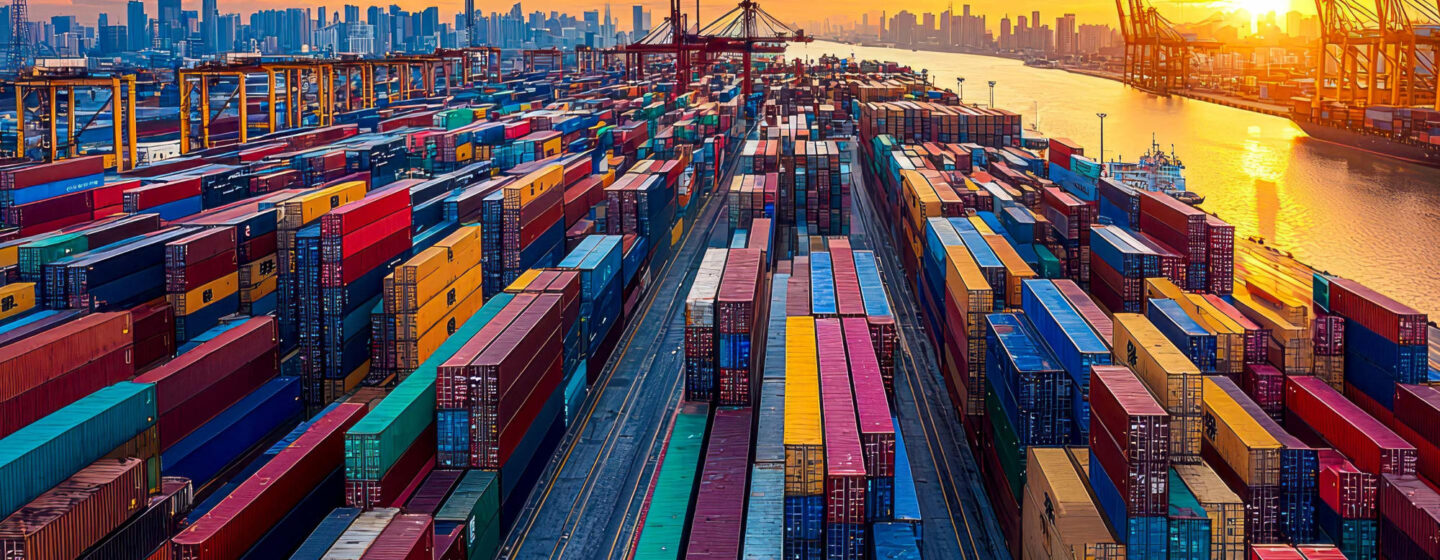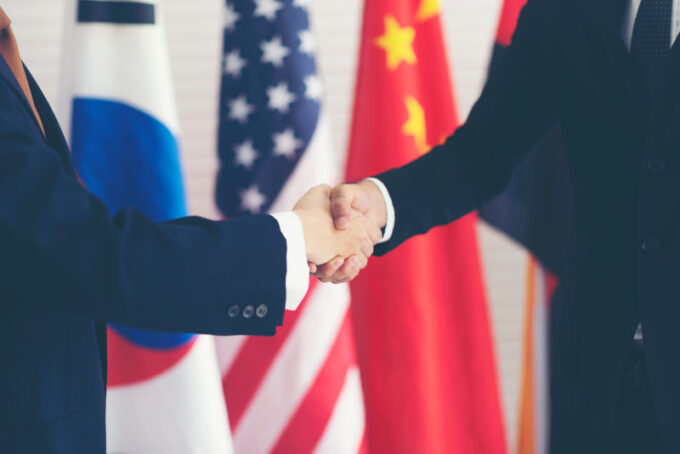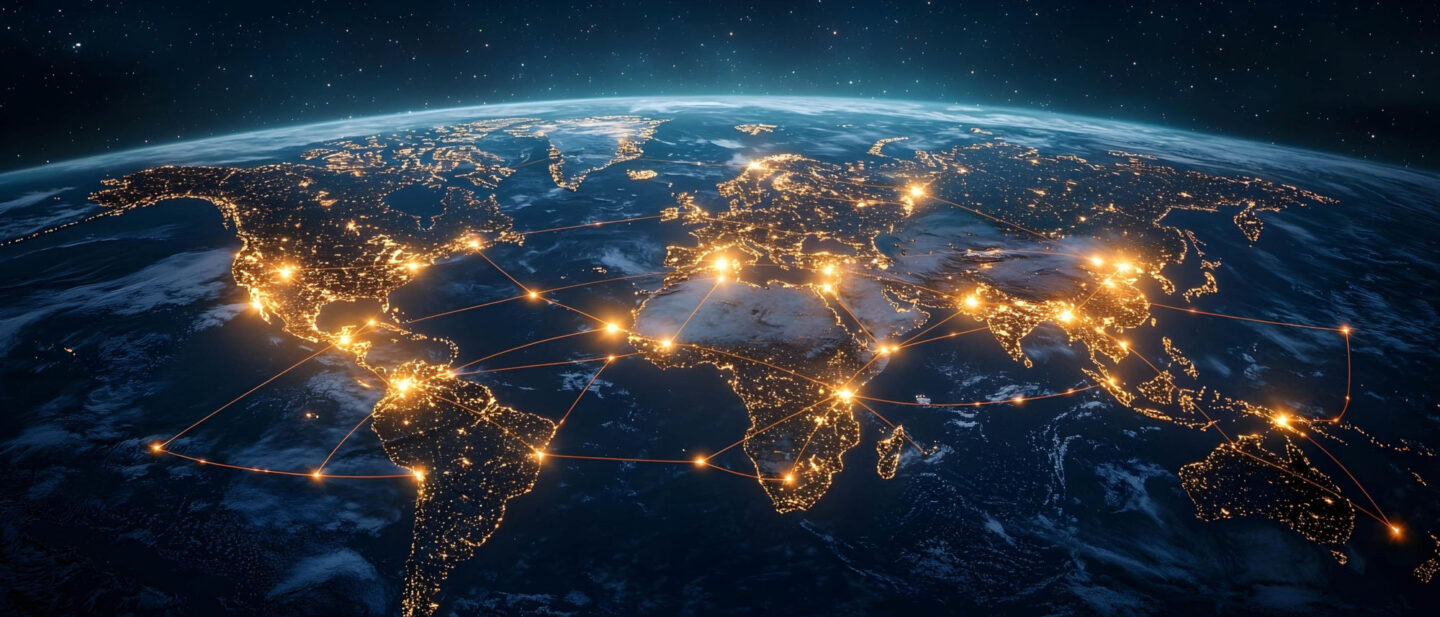
How supporting neurodiversity can unlock abundant potential
Increasingly, employers are offering support to neurodivergent employees – and recognizing the benefits that neurodivergent talent offers. ...

Published April 28, 2025 in Geopolitics • 10 min read
US President Donald Trump built his reputation on The Art of the Deal – approaching business through shrewd negotiation, calculated risk-taking, and an unwavering focus on securing deals in his favor.
As the President of the United States, these same tactics are reshaping his approach to international trade. President Trump is not governing as a traditional statesman or career politician, but as a businessman applying hardline strategies to global economics. His approach to international relations prioritizes American interests through deal-making that often involves leveraging US economic might.
The sweeping tariffs announced on “Liberation Day” serve as a prime example of this philosophy in action. Without exemptions for allies or considerations for downstream impacts, these tariffs represent a significant shift in American trade policy. For businesses worldwide, this creates a new operational reality where protectionism may become the norm rather than the exception – as evidenced by the global market rollercoaster ride and collateral damage to the US stock market from the implementation of sweeping tariffs (and their subsequent reduction to 10% for 90 days, except for China with tit-for-tat tariffs now reaching 140%).
This new trade landscape fundamentally changes the playing field for economies around the world, according to Simon Evenett, Professor of Geopolitics and Strategy at IMD. “The threat of trade barriers, and the potential and position of trade barriers, is going to alter the cost calculus of supply chains around the world, said Evenett, who also serves as Co-Chair of the WEF Global Future Council on Trade & Investment. “There will be a reshuffling towards jurisdictions which are low cost once you include tariffs,” he forecast.
Maggie Dong, a Professor of Marketing at UNSW Business School and member of the UNSW Supply Chain Sustainment Research Group, puts it succinctly: “Uncertainty has become the new certainty. Unlike one decade or two decades ago, when trade liberalization and free trade arrangements were widely embraced by most countries, we’re now seeing a reversal of that trend,” she explained.
With these fundamental shifts in global trade, businesses face mounting pressure to adapt quickly. Yet, in this environment of uncertainty, what practical strategies can companies employ to maintain competitiveness while mitigating rising risks?
Most trade sanctions are bilateral. That is, country X takes action against country Y. Well, what that often means is, if you can’t export or source from country Y, then find country Z, which you can either export or source from.- Simon Evenett, Professor of Geopolitics and Strategy at IMD
When confronted with trade barriers like tariffs, businesses face significant challenges in maintaining cost-effective supply chains. However, history provides valuable lessons about successful adaptation strategies. Evenett referenced Australia’s own experience with Chinese economic coercion as a model worth studying.
“At IMD, we teach the playbook that Australian companies used to deal with this, and a lot of that playbook, including the supply chain part of it, is what executives need to consult at this time,” he explained.
The fundamental principle of this playbook relies on the bilateral nature of trade sanctions. Evenett elaborated: “Most trade sanctions are bilateral. That is, country X takes action against country Y. Well, what that often means is, if you can’t export or source from country Y, then find country Z, which you can either export, or source from.”
This approach proved effective for Australian companies when China took punitive action against Australia and its economy in retaliation for Australia’s call for an investigation into the origins of the COVID-19 pandemic. Evenett cited Australia’s Casella wines as a notable example: “One response it made was to buy a vineyard in Chile, and then export from Chile to China, taking advantage of the Chile-China free trade agreement. So, essentially, migrating the supply chain, sourcing, or production is a response for affected firms.”
However, this strategy has limitations. For premium products tied to specific geographical origins, supply chain relocation presents significant challenges. “If you’re Penfolds or Treasury wines, and you’ve got vineyards which have this particular terroir, you can’t do that strategy,” Evenett noted.
Recent efforts by the US to “de-risk” supply chains from China, without fully decoupling, show that strategic diversification remains a priority beyond partisan trade wars. Multinational firms are actively adjusting their sourcing strategies to reflect this new landscape, increasingly exploring options in Southeast Asia, India, and Mexico – regions that benefit from proximity, cost advantages, or geopolitical alignment.
Beyond immediate responses, businesses must consider longer-term structural changes to their supply chains. Both Evenett and Dong emphasized the importance of diversification as a foundational strategy.
“Geographic diversification is needed, and I think that’s not just because of Trump’s new tariff policy, but because of the global trend of local protectionism,” said Dong.
For multinational corporations, this means avoiding over-reliance on single markets, particularly in politically sensitive regions. “Diversifying their supply base across multiple countries and even continents. In that way, they can better absorb the shocks of tariffs or other trade barriers,” she said.
However, diversification comes with trade-offs that businesses must carefully consider. “Once you diversify your supply base or your customer base, that means supply complexity will increase a lot, and that adds to the costs and systemic risks stemming from this complex supply base,” she cautioned.
Another strategic approach involves nearshoring and regionalization. Nearshoring involves relocating supply chains closer to a company’s home base, while regionalization focuses on prioritizing specific regional markets. Post-US-China trade war research indicated that US firms followed predictable patterns based on their market priorities. “US firms, if their major market is in the US, will choose to re-shore or nearshore their suppliers. But for the US firms whose major markets are not in the US, they will choose those suppliers far from North America,” Dong explained.
Beyond national policies, new international arrangements may emerge in response to trade instability.

Governments play a critical role in helping domestic businesses navigate trade disruptions. Evenett proposed a two-pronged approach for policymakers to support business adaptation.
“There are two things that policymakers can do. One is to take a hard look at all the domestic regulations and policies which could hold back competitiveness, and so having a review of all those regulations and seeing which ones are still fit for purpose and which ones may even need to be strengthened and improved is the first step,” he recommended.
The second component involves government support for export diversification. Rather than direct subsidization through export credit agencies, Evenett proposed a tax-based incentive system. “Change the tax system to encourage firms to sell in multiple markets, including the domestic market,” he suggested.
This approach would reward companies for maintaining diverse market exposure. “Imagine you’ve got a tax credit. The firm gets a tax credit based on how concentrated its sales are worldwide, including in the home market. And the less concentrated the sales are geographically, the larger the tax credit,” he explained. This system would encourage businesses to enter new markets while reducing dependency on any single market, including the domestic one.
Beyond national policies, new international arrangements may emerge in response to trade instability. Evenett observed growing interest among nations in creating “an oasis of stability” amid trade chaos. “It’s very clear that there are countries out there whose representatives want to find creative ways of signaling that they’re not going to participate in the chaos and that they are open for business,” he observed.
These arrangements may take forms other than traditional free trade agreements, which require lengthy negotiations. “I think that we’re going to see a number of ad hoc measures in the short term to try and build confidence and to signal that while some countries may be going off the reservation in terms of trade policy, not all governments are going to do that,” Evenett predicted.

Tariff swaps enable firms to exchange a fixed tariff rate for a floating one, helping them stabilize cost in volatile markets.- Maggie Dong, Professor of Marketing at UNSW Business School
As trade uncertainties increase, financial instruments to manage tariff-related risks are likely to evolve. Both experts anticipate increased use of hedging strategies and insurance products to mitigate exposure to sudden policy changes.
Dong identified emerging financial tools designed specifically for tariff risk management. “There must be development of multiple tariff-linked financial tools and some insurance tools to lower the risks for especially multinational companies,” she forecast.
These tools include tariff swaps, which function similarly to interest rate swaps. “Tariff swaps enable firms to exchange a fixed tariff rate for a floating one, so they help them stabilize costs in volatile markets,” Dong explained. This approach allows businesses to choose the risk profile that best suits their operations.
Political risk insurance represents another growing area as insurers expand their offerings. “Insurers are expanding their offerings to include more tailored policies that cover tariff-related disruptions,” she said.
Supply chain finance solutions offer additional options for businesses to manage tariff impacts. According to Dong, these tools help firms to maintain liquidity by allowing early payments on some invoices at discount rates so both buyers and suppliers reach an agreement to avoid being charged tariffs.
Currency risk management also becomes increasingly important in volatile trade environments. “In global supply chains, there are also currency fluctuations that compound the volatility caused by tariffs. So, using multi-currency loans sometimes helps businesses manage these risks,” she suggested.
For commodity-dependent businesses, futures markets provide another avenue for risk management. “There are commodity futures and options. Steel is definitely a commodity. So you can leverage the commodity futures and options to lock in prices and to minimize exposures to sudden cost spikes,” Professor Dong said.
Evenett, however, cautioned about the limitations of market-based insurance for politically driven risks. “Insuring against a shipping loss or a weather event or some natural non-governmental event, those types of things insurance markets can be created for. But insuring against arbitrary policies by another government, where that other government seems to be determined to repeat those arbitrary policies that I suspect might be more difficult to insure against,” he warned.

“This interconnectedness presents both challenges and opportunities. While direct exports to the US may face barriers, partnership possibilities exist with companies from other affected nations.”
The current trade landscape presents businesses with multi-layered challenges. Tariffs not only affect direct trade between countries but also create ripple effects throughout global supply chains.
Dong illustrated this complexity using the example of washing machines. Korean manufacturer Samsung faces direct tariff impacts when exporting to the US market, but US manufacturer Whirlpool also experiences cost increases due to globally integrated supply chains. “If it needs the foreign imported steel, or some components that use the steel, because now it’s a global supply chain, you can’t expect everything to be produced in the US. So, its cost also increases.”
This results in higher prices across the board, potentially reducing overall market demand. “Because of the increased price overall, there will be less demand for washing machines in US markets, leading to everyone being worse off in this market and also in the foreign markets,” she observed.
This interconnectedness presents both challenges and opportunities. While direct exports to the US may face barriers, partnership possibilities exist with companies from other affected nations. Firms in countries such as Australia could potentially be “better off in other markets, if they partner with other foreign companies that foresee their loss in US markets and come up with a better competitive advantage and lower costs,” Dong suggested.
Ultimately, adaptability, diversification, and strategic partnerships will prove essential for businesses navigating this period of trade uncertainty. By implementing flexible short-term adjustments while developing longer-term strategic reconfiguration plans, businesses can position themselves to weather current disruptions while building resilience against future trade shocks.

Head of School and Professor at School of Marketing, UNSW
Maggie Chuoyan Dong is currently Head of School and Professor at School of Marketing, UNSW. Maggie's research interests range from business-to-business marketing to the marketing-operations interface with a strong focus on a range of supply chain topics (including the supply chain resilience and digital transformation of supply chains).

Professor of Geopolitics and Strategy at IMD
Simon J. Evenett is Professor of Geopolitics and Strategy at IMD and a leading expert on trade, investment, and global business dynamics. With nearly 30 years of experience, he has advised executives and guided students in navigating significant shifts in the global economy. In 2023, he was appointed Co-Chair of the World Economic Forum’s Global Future Council on Trade and Investment.
This article was first published by UNSW Business School in Sydney, Australia, and is republished with its permission.

May 9, 2025 • by Josefine van Zanten in CHRO Circle
Increasingly, employers are offering support to neurodivergent employees – and recognizing the benefits that neurodivergent talent offers. ...

April 25, 2025 • by Richard Roi in CHRO Circle
Progressing internal talent helps hedge against new CEO failure, but it all hinges on integrating leadership development and succession planning. Ric Roi explains why and shares four strategic steps to getting it...

April 21, 2025 • by Simon J. Evenett, Katharina Lange in CHRO Circle
Geopolitical disruption requires a systems thinking approach from CHROs, argue IMD’s Katharina Lange and Simon Evenett....

March 18, 2025 • by Tomoko Yokoi in CHRO Circle
Large behavior models (LBMs) promise to be even more impactful than large language models, says IMD’s Tomoko Yokoi...